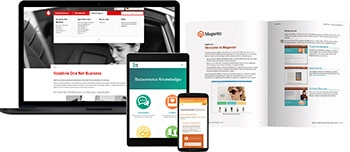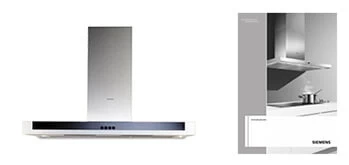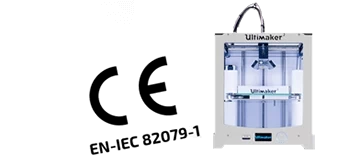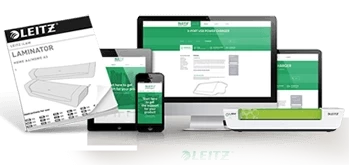-
UK User Manual Templates
- Machinery
- Electronics
- Medical
-
Meets legal requirements
-
User friendly
-
Improved UX
-
Re-use of content
We help organisations
to make clear manuals
for their products
We offer various kinds of advice and support in the development of your documentation. Would you like to have a manual made, and are you looking for a partner? We support our customers by writing, illustrating, translating, checking and managing their manuals.
The goal of a clear manual
The intention of a manual is to convey information on a product to its user. In this case, “products” means machines, software, apparatuses and consumer goods. Any risks that are not caught by the product itself, or by add-ons to it, are described in the manual. In addition, the manual sets out all aspects of the product such as its use, installation, assembly, transpotrt, and maintenance.
How to make a manual in 10 steps
A number of elements are common to the making of any manual. A good knowledge of, or approach to, these contributes to the quality of the manual. These are listed briefly below.
Ten steps to a great manual:
- Know your target audience.
- Look into what directives apply to your product.
- Decide on the layout.
- Gather your product information.
- Write effective instructions.
- Be as concise as you can.
- Use illustrations and animations
- Translate and localise your manual.
- Organise and manage your content
- Generate your output
These 10 steps help you
creating a clear manual
Know your target audience
Information on your product should be communicated to the user or target audience accurately and effectively. It is important to know that every target group has its own characteristics, and that these must be taken into account as you are producging your manual. The profile of the average consumer is completely different from that of someone who installs water-purification systems, for instance. So a different approach is needed.
When you are creating a manual you speak mostly with a lot of experts such as mechanical engineers, electrical technicians, and industrial designers, installation technicians, maintenance specialists, marketing experts, and so on. All of these experts provide information on the product—and they all use their own technical jargon. When you are creating a manual, the trick is to take all of this information and communicate it to your target audience without compromising its accuracy, and in such a way that they understand it.
These considerations also apply to the making of any manual:
- Cut out any superfluous details. Be as concise as you can. As Albert Einstein once said, “Everything should be made as simple as possible, but not simpler.”
- The user should have to make as little effort as possible (though not no effort at all, in accordance with the principles of minimalism).
- Navigation is key. Tables of contents must set out clearly which information can be found on which pages. And headings must explain in short compass why the user should take time to read the section in question. For instance, a heading such as “How to connect to a device” is better than “Bluetooth connectivity”.
Look into what directives apply to your product
The Directive Liability for Defective Products (85/374/EEC) protects consumers from damage caused by a defective product to their health or property. Whenever a product has a defect, the manufacturer or the importer can be held liable. A manual is regarded as an integral part of the product. A manual that isn’t as effective as it shuld be can therefore lead the product to be found defective.
In addition, CE-directives require that residual risks need to be described in a manual. It is therefore crucial to keep abreast of the directives that apply to your product. Once these are known, it is possible to say what needs to be taken into account in making the manual. Thus one of the things the directive on machinery requires is that both intended and foreseeable unintended use should be referred to in the manual. In addition, information on decibel levels, stability, the manufacturer, and so on, should be included. The Machinery Directive (2006/42/EC) and a number of other directives also require that manuals be translated.
Decide on the structure of the manual
A manual must be complete and must encourage proper, safe use. Directives often require the inclusion of certain specific elements. In many cases, the directives also leave room for further, individual interpretation. One way to make a good manual is to make use of standards. The IEC 82079-1:2019, for instance, is the international standard for user manuals. It describes what manuals should contain, and how they should be structured, put together, and presented. The standard describes what sort of structure a good manual should have. They specify the parts that have to be included at a minimum, such as chapters on safety warnings, technical specifications, installation, use, and maintenance. But they also include requirements for the title page, the foreword, and the font size.
Gather your product information
It is vital, in creating a manual, to gather as much product information as possible, such as technical specifications, installation plans, marketing materials, and any CAD files. This information is acquired by speaking with experts in the organisation you work for. The trick is to listen well, to analyse and understand what they tell you, and to ask questions to confirm your ideas and select them for presentation.
Write effective instructions
Once you’ve gathered and selected all your information, you can use it to produce your texts. While you are doing this, it’s crucial that you keep your target audience in mind the whole time: they have to find what you’re communicating easy to undertstand. In general, even the product information that is already there has to be edited. Marketing materials mostly are not accurate enough and technical descriptions not readily enough understood by, the target audience. Quite often there is no written information at all!
The principles of minimalism as well as the use of Simplified Technical English, can help convey the information more effectively. When STE is used correctly, if can offer your business all the advantages that standardization brings: consistency, higher productivity and cost-savings. Applying the principles of minimalism can bring about a reduction of 30% in the time it takes to train users, and means that users can absorb what they’re learning 25% more effectively.
Keep your text brief and to the point
No one wants to be snowed under with details in a manual, and nobody wants to see big bills for translation. A picture paints a thousand words, and Illustrations can replace a lot of your text. And of course they don’t need translating. By applying the principles in the STE standard, you can remove all the superfluous material, and that can cut the length of your text by as much as 30%.
Make illustrations and animations for your manual
In addition to cutting down on the amount of text you have to use, illustrations help make the steps you’re showing a lot clearer than is poasible with words alone. Instructions for assembly and installation can often be replaced in their entirety by images, so that you have a manual ni the manner of an IKEA catalogue. Think twice before using photos in a printed manual. Manuals can be copied, and the quality of any photos suffers drastically as a result. Besides, a photo contains a lot of unnecessary detail that can clutter things up. In creating a good illustration, you can choose which product information or details to drop, so that you can focus the user’s attention on the procedure at hand. What’s more, illustrations make for a visually appealing manual that is more pleasant to read. The CAD files that are used to make illustrations are being used more and more to create 3D animations that explain how to use a product. And a QR code on a machine part can direct a repair technician directly to an animation showing how to replace a particular part.
.webp)
Translate/ localise your manual
With internationalisation, a manual often has to be translated. Sometimes a decision to translate is made for the sake of effective and user-friendly product support—but sometimes in order to meet the requirements of legislation. Technical translations are a specialty unto itself, so you must choose your translator or translators with care. A familiarity wth the material and the ability to use language consistently are important. For longer-term or repeat assignments, translators can make use of translation-memory tools. Effectively managing the texts you’ve translated can also allow re-use, and that in turn can result in considerable savings.
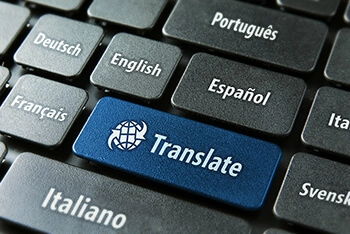
Manage your content
There are quire a few authoring, editing, and publishing applications that allow you to handle the creation and management of your manuals—Author-it, MadCap Flare, and Framemaker, to name just a few. They’re great for organising your information. The idea is that information can be stored in modules and then be re-used whenever you need it.
Make the actual manual
Your product information is turned into a manual with the help of software applications. Three forms of output can be distinguished: print, online, and on-device. For the last two, 2D drawings, but also 3D animations, can be used.
